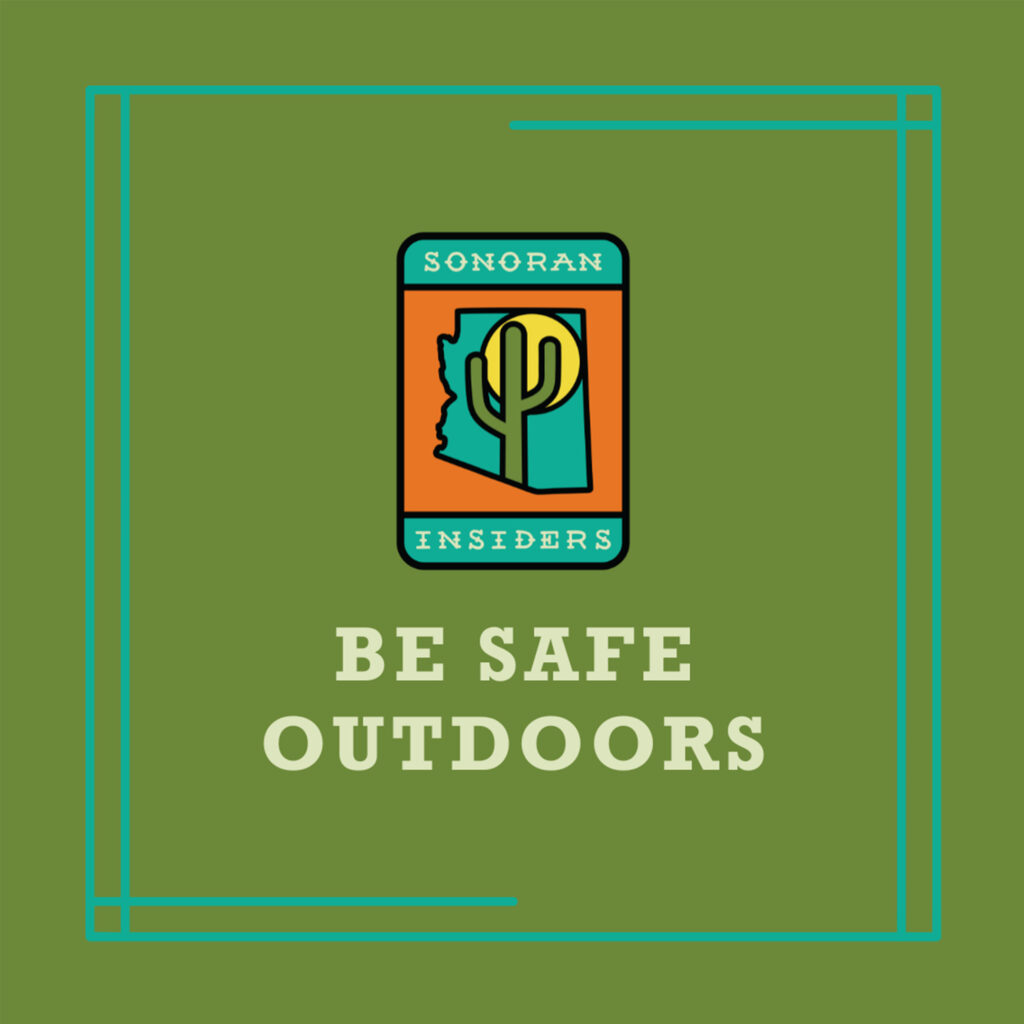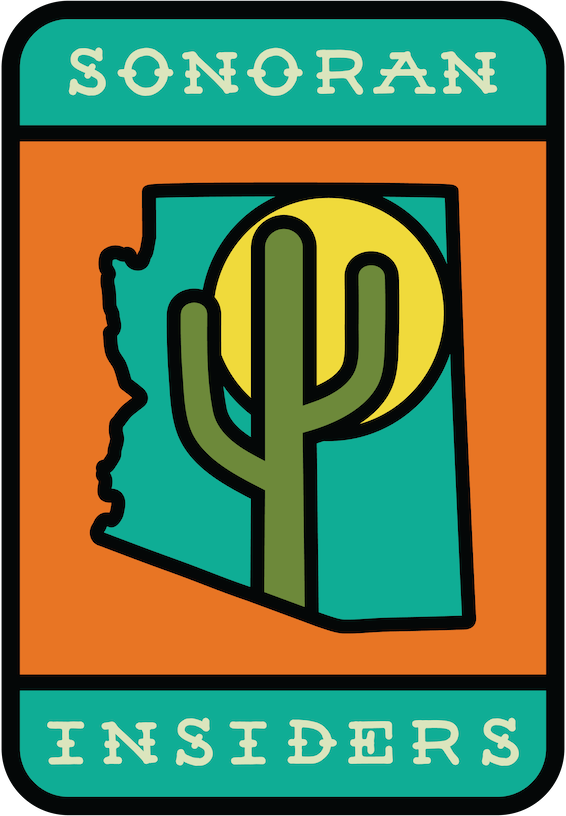What do Sonoran Insiders stand for, and hope to inspire in others?
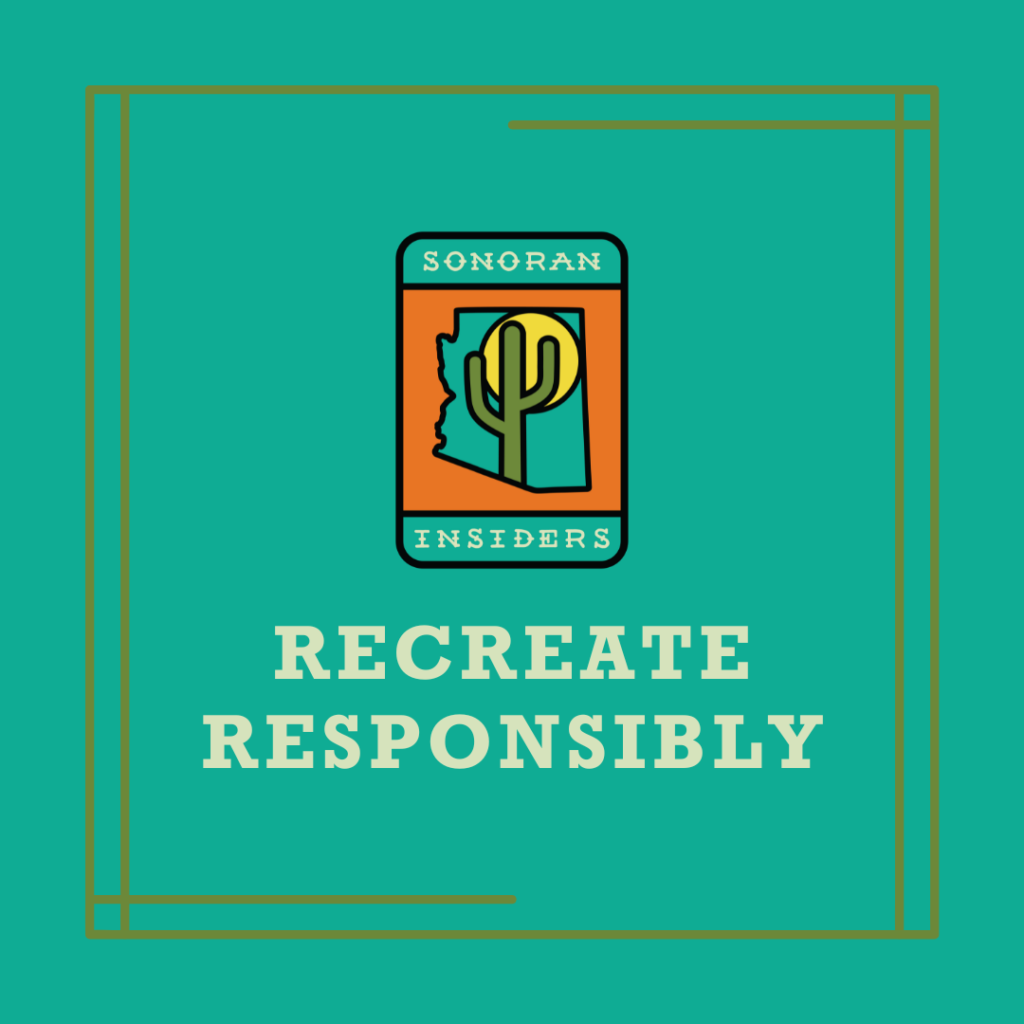
Sonoran Insiders encourage an outdoor ethic that highlights the responsibility to recreate without leaving an impact on natural spaces. Sonoran Insiders respect landscapes so that they can be enjoyed by present and future generations of human visitors, and for the long-term sustainability of ecosystems and their wildlife inhabitants. To recreate responsibly …
- Travel on designated trails. Minimize your impact by traveling on durable surfaces like rock, gravel, dry grasses, and washes, and avoid using wet and muddy trails. Soils in the desert are especially fragile, and cryptobiotic soil can be damaged very easily!
- Protect riparian areas by camping at least 200 feet from lakes and streams.
- “Pack it in, pack it out” (Don’t leave belongings, trash, human and pet waste, etc.)
- Leave it how you found it, and avoid leaving any markings or “art” on trees, rocks, etc.
- Avoid building cairns (rock stacks). Rock cairns are used for marking not-so-well-defined trails and should only be made by park rangers, trail maintenance volunteers, or trail creators. Building your own cairns can get people lost, disrupt and damage ecosystems, and impact wildlife.
- Observe, but don’t disturb (the wildlife).
- Make a thumbs up, extend your arm all the way, close one eye, and see if you can hide the animal with your thumb. If you can cover the entire wild animal with your thumb you’re probably at a safe distance.
- Keep dogs leashed so they don’t disturb wildlife and ecosystems.
- For additional ways to practice responsible recreation, we suggest following AppreciateAZ’s 7 Principles of Leave No Trace.
Sonoran Insiders recognize that, just as the trails that weave throughout landscapes are common ground, people in outdoor spaces have a shared responsibility to maintain, protect, and give back to the landscapes they cherish and enjoy. To be a good steward…
- Educate yourself on the history and cultural and ecological significance of the landscapes you are visiting. Better understanding of nature leads to deeper appreciation and a heightened sense of responsibility to care and protect natural spaces.
- As a visitor, respect the landscape and leave natural and cultural materials and objects for others to enjoy.
- Avoid damaging sensitive or possibly dangerous areas (such as off-limit caves or mines and habitat areas, burned areas that are recovering, etc.).
- Do your research and understand the rules and regulations of the landscape you’re visiting.

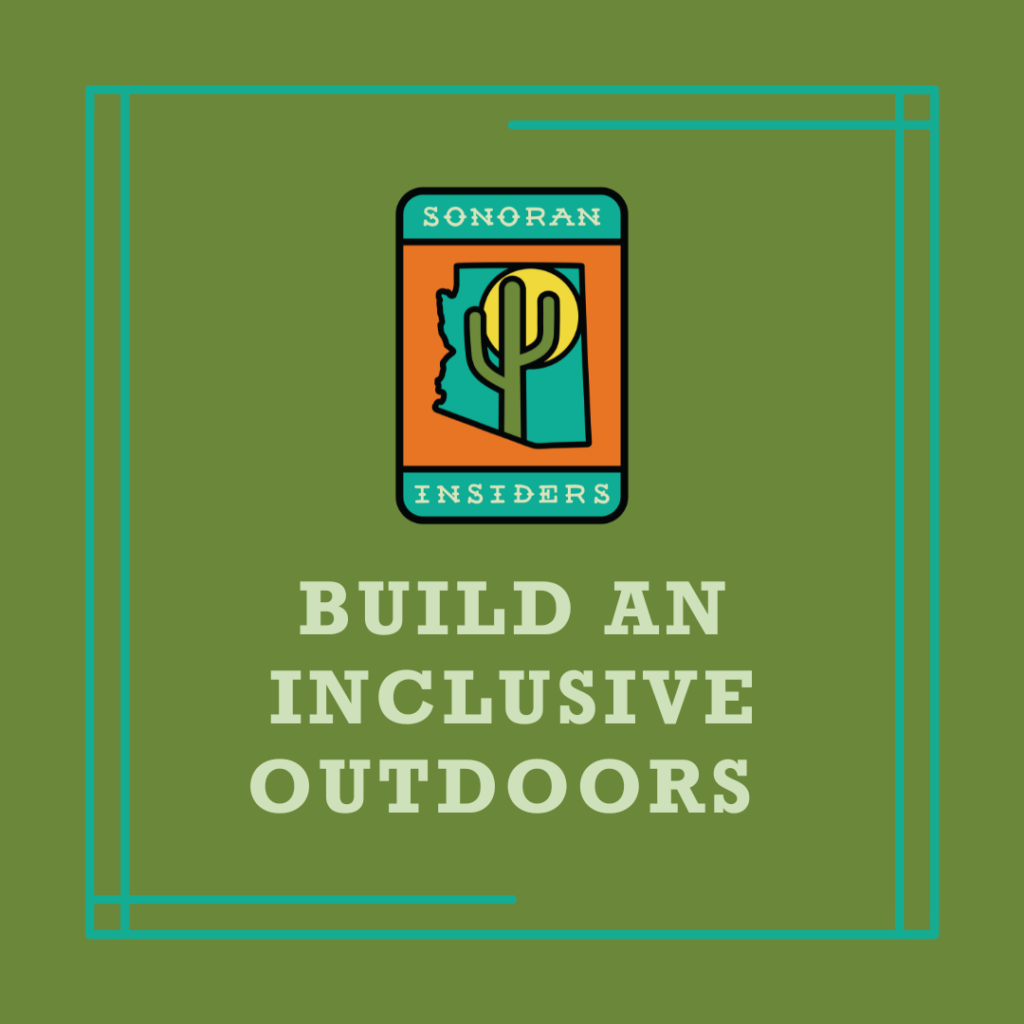
Sonoran Insiders strive to provide experiences and education that add to building an outdoors that is inclusive, accessible, and a safe space for all. An inclusive outdoors welcomes people of all backgrounds and abilities to get outside and have positive, meaningful experiences in nature. To build an inclusive outdoors…
- Help create a safe space and support others’ positive experiences in nature by respecting their comforts and boundaries. This could look like being mindful of nudity and profanity while out on trails, or moving aside to let someone pass by.
- Let the sounds of nature prevail and be mindful of loud voices and music.
- Amplify opportunities to experience nature, especially for people with differing abilities and people of diverse racial and ethnic backgrounds. For example, some organizations host safe space events specifically for people of color or people with disabilities.
- Seek to dismantle barriers that may exclude people from accessing the outdoors. For example, you can use your platform to share a free National Public Lands Day event, possibly bringing people out who otherwise may have been financially limited from participating. Or you can share information about access and experience in outdoor spaces like trail difficulty, ADA access, or outdoor recreation resources.
- Respect the outdoors as the home of non-human living beings and take care to not disrupt it.
- For additional ways to build and inclusive outdoors:
Sonoran Insiders acknowledge and respect that landscapes have been and are ancestral homelands, ceremonial grounds, hunting and harvesting places, and more for Indigenous peoples. They also acknowledge that some outdoor areas are governed by Native American tribes and may be off limits or of limited access to visitors. To respect sovereign land…
- Know where you are and acknowledge the original stewards of those lands.
- Do not visit or Geotag areas that are off-limits or sacred on tribal lands without appropriate permissions and a Native guide, if required.
- Do not desecrate Indigenous heritage by damaging petroglyphs or other culturally significant sites.

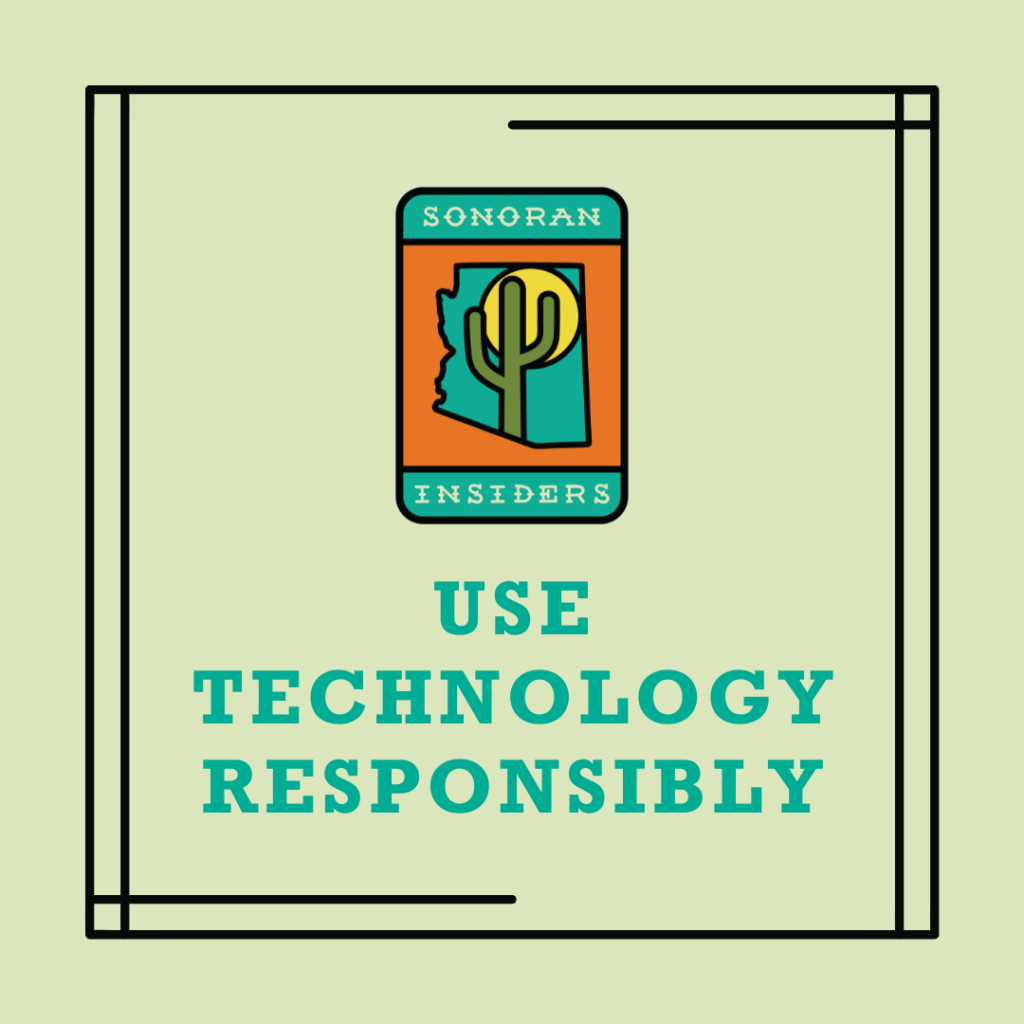
Sonoran Insiders may use technology to aid their own and other’s outdoor experiences, but will never use technology in a way that negatively impacts others’ experiences. To use technology responsibly…
- If you are using a drone, make sure it’s allowed in the area you are visiting (drones can disturb wildlife and people, and potentially cause wildfires, so they are often not allowed in many places), and that you are not disturbing the solitude of others with their use.
- Geotagging should be done with care and consideration. Increased visitation can damage historic sites and sensitive habitat, stress wildlife and plant populations, overcrowd trails, and lead unprepared people into dangerous situations—among other potential problems. Before geotagging, think about both the negatives and positives of sharing an exact location. How can you uphold ethical outdoor behavior without becoming a gatekeeper of outdoors spaces, and leave some joy of discovery for future visitors?
- Be mindful that some apps have user created data that can include undesignated trails.
Sonoran Insiders know that the key to having positive personal experiences outdoors lies within proper preparation and safety practices. To be safe outdoors…
- Be prepared. Check the weather (flash floods can happen really fast!), make sure you have all the gear you need, and plan for hazards and emergencies.
- Know your limits and have a backup plan. Don’t take unnecessary risks. Let someone know where you will be and when you should return.
- Respect closure areas. There may be a safety issue you are unaware of, or there may be an experiment/scientific study or sensitive wildlife/plant population that is in recovery.
- Carry an appropriate first aid kit and know how to use it. Consider taking a wilderness first aid class.
- Carry and know how to use a map and compass.
- If accessible to you, consider carrying a GPS device, satellite communication device, or personal locator beacon (PLB). Even if you carry these, don’t rely on them as a substitute for practical knowledge and tools like a map and compass.
